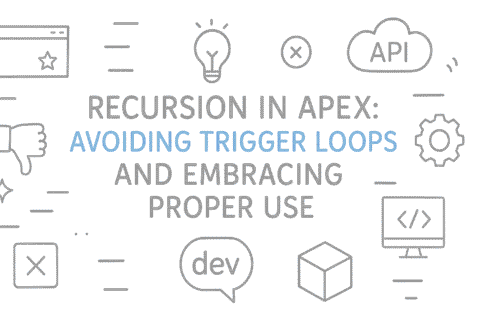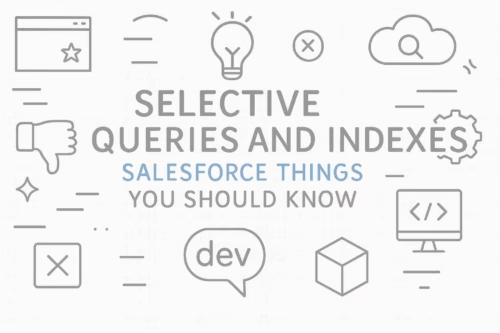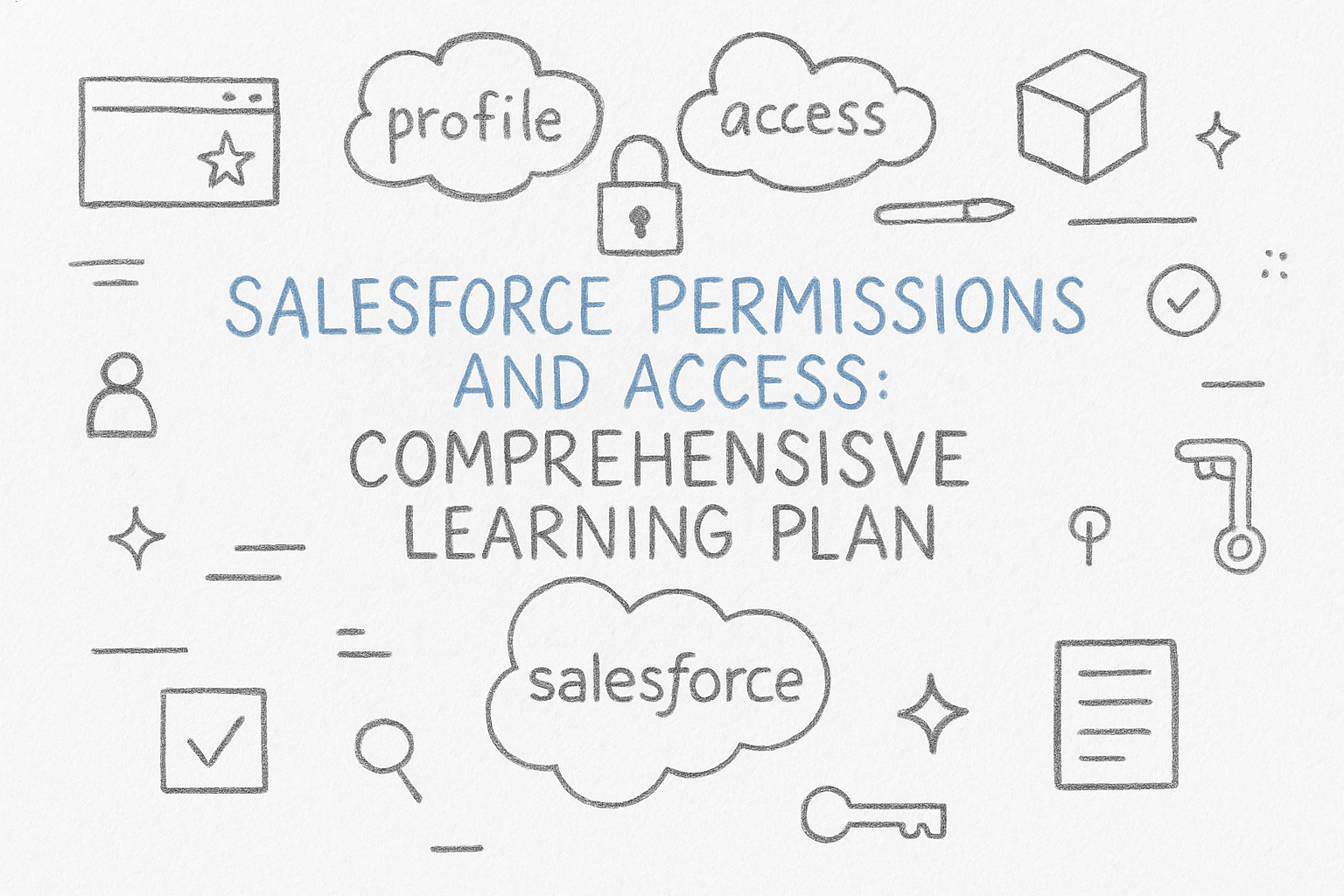Recursion in Apex has a bit of a reputation. Many Salesforce developers first hear the term when a trigger unexpectedly calls itself over and over, leading to the dreaded “Maximum trigger depth exceeded” error. It’s easy to assume recursion = bad, especially if you don’t come from a computer science background. In reality, recursion is a fundamental programming concept, a powerful tool when used intentionally, but a source of tricky bugs when it happens unintentionally. This post will simplify recursion in the context of Apex, exploring both the pitfalls of unintended recursive triggers and the value of deliberate recursion for solving certain problems. We’ll look at code examples of each, discuss how recursion interacts with Salesforce governor limits and performance, and cover best practices (like static flags and trigger patterns) to prevent unwanted loops. By the end, you’ll know when to fear recursion, when to embrace it, and how to keep your triggers from going rogue.
Continue readingPost Category → Salesforce
Selective Queries and Indexes – Salesforce things you should know
I am starting a new series on Salesforce things you should know. Not sure how long I can do this but surely try to keep up. To start with lets jump into one of the salesforce’s most overlooked topics when it comes to Queries – Salesforce Selective Queries and Indexes.
Continue readingAgentforce is not enough for Salesforce Developer
It’s June 2025, eight months since Agentforce became generally available. I’ve witnessed it tackling numerous Salesforce challenges effectively. But despite the rapid evolution of AI, I still notice developers and companies feeling cautious about fully embracing Agentforce. What’s holding developers back?
Could it be the mandatory enabling of Data Cloud? Salesforce clearly emphasizes how Data Cloud enhances AI results. However, if a developer or admin isn’t planning to fully leverage Data Cloud, they’re still required to enable it, even minimally in their Salesforce org just to get Agentforce running. Understandably, this might cause frustration. Although Salesforce clarifies that core Agentforce features work seamlessly with existing CRM data without a full Data Cloud setup, the technical necessity of enabling it, even minimally, might deter some users.
Continue readingSalesforce Integration Using REST API: Comprehensive Guide
Salesforce provides a robust REST API that enables seamless integration between the Salesforce platform and external systems. This guide covers everything from the basics of the Salesforce REST API to advanced topics like OAuth 2.0 authentication flows, performing CRUD operations, using Postman for testing, external integration considerations, Apex callouts, security best practices, and troubleshooting. It is structured for both beginners and experienced developers, with clear examples and illustrations.
Continue readingSalesforce Permissions and Access: Comprehensive Learning Plan
Mastering Salesforce permissions and access requires understanding multiple layers of security that work together in both Salesforce Classic and Lightning Experience. This learning plan is organized into modules that progress from fundamental concepts (suitable for beginners and Admins) to advanced topics (for experienced Developers and Architects). The core security model is the same in Classic and Lightning, with only the setup interface differing slightly.
Continue reading




